

Max Davies
How Audi, BMW, Honda, Mercedes-Benz, and Suzuki started out in Australia, and where they are now
9 Minutes Ago
Not only is this an exceptionally beautiful mid-engine supercar, but it might also be the most liveable Spyder in its class
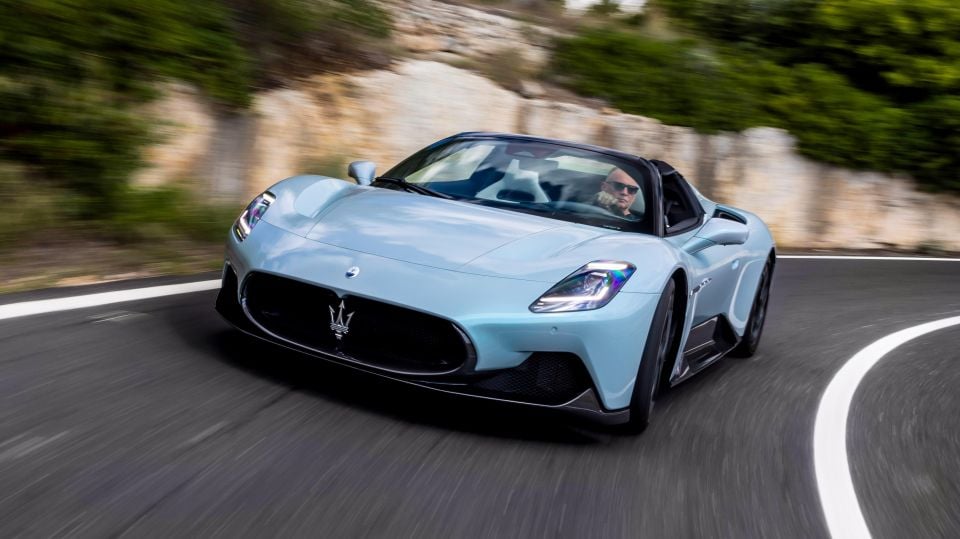
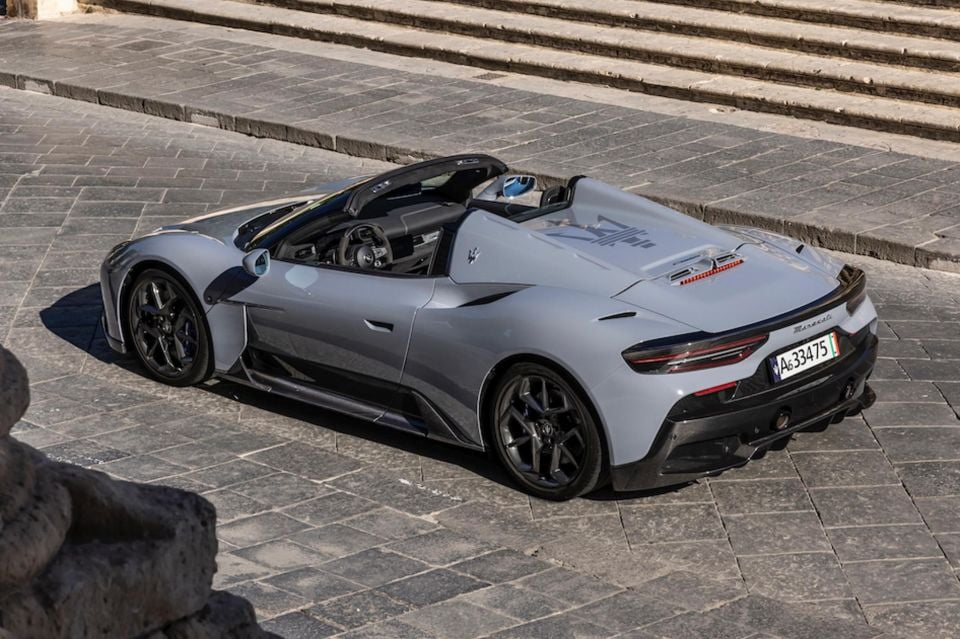

Quickly see how this car stacks up against its competition. Select any benchmark to see more details.
Where expert car reviews meet expert car buying – CarExpert gives you trusted advice, personalised service and real savings on your next new car.
I knew the Maserati MC20 Cielo was fast from the spec sheet alone – but holy moly, not like this.

I’ve pulled out to overtake an older BMW M3 and within a blink of the eye I’ve shot past a veritable line of traffic with margin to spare.
I can tell you with a straight face that this open-top Maserati is one of the fastest cars I’ve ever driven on a Euro B-road. This includes serious company, like the McLaren 720S Spyder and Ferrari 296 GTB, two of the greatest supercars ever made in my view.
What struck me most about the Maserati is that I couldn’t actually leave my right foot pinned for more than what seemed like a couple of seconds. It’s scary fast.
Attending the launch event in Italy for the next-generation Maserati GranTurismo was special enough. The added bonus of a few hours in the MC20 Cielo, the Spyder version of the Trident-brand’s mid-engine supercar, made the Italian trip irresistible.
The press car was presented in its limited-edition PrimaSerie Launch specification, including the latest three-layer paint known as Acquamarina, now available as part of the Maserati’s Fuoriserie personalisation program.
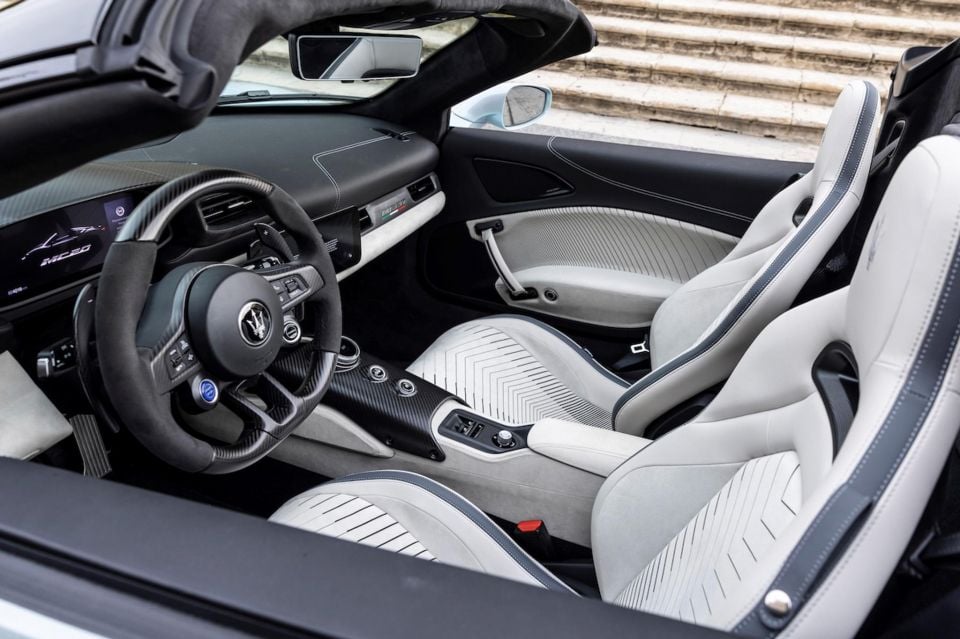
I know it’s a special livery and does look superb when the sun hits it, but delving into Maserati’s MC20 Cielo configurator reveals my own favourite specs. I love the Blu Infinito exterior, 20-inch Corsa Matte Dark Miron forged alloy wheels with yellow brake calipers, and Nero/Blue Cielo interior. This is a truly spectacular combination in my view, and one well worth exploring online.
What made this trip extra special was the fact I’d somehow missed the regular MC20 event. So the opportunity to pilot the Cielo in roof-down mode, no holds barred, on some random B-road on the outskirts of Rome would more than make up for that initial disappointment.
The first thing I noticed was the MC20 Cielo’s flash roof. In fact, it has the fastest electrically-retractable glass roof in its segment – boasting an opening and closing speed of just 12 seconds. Seeing it in action is also a joy to behold.
It also claims to be the largest roof of its type and it uses Polymer-Dispersed Liquid Crystal (PDLC) technology. What’s that? This tech makes it possible to change the roof from clear to opaque simply at the press of a button.
For buyers in hotter climates, the roof also features thermal insulation for protection from those increasingly stifling summer rays.
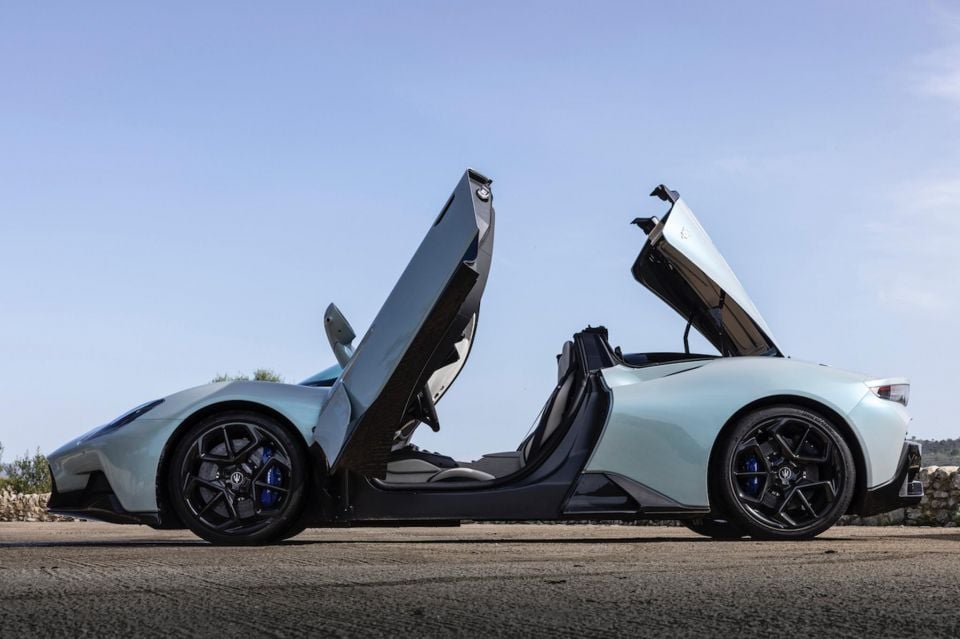
More surprising still, is that even with the roof open there’s no discernible loss of luggage space – meaning you still get 100 litres of stowage behind the Nettuno V6 motor, plus another (modest) 50 litres up front in the frunk. Beyond the roof, the car incorporates so much more of the latest tech to make a truly special driving experience.
Key deliverables for MC20’s engineering team included matching the Cielo’s outright performance with its blisteringly quick coupe sibling. While I didn’t have access to a V-Box for any kind of accurate performance data, from my experience I’m confident in saying they well and truly knocked it out of the park.
It’s light too. The entire body is made of carbon-fibre and composite materials, which helps enormously when you consider the Cielo (and its sophisticated roof mechanism) only adds 65kg to the coupe’s 1475kg kerb weight.
That’s also part of the reason why the Cielo doesn’t feel at all compromised in the handling and ride departments – not one iota. Alas, I’m getting ahead of myself, again.
The Maserati MC20 Coupe is priced from $490,555 before on-road costs, while the MC20 Cielo costs $555,000 with both variants including a three-year maintenance package.
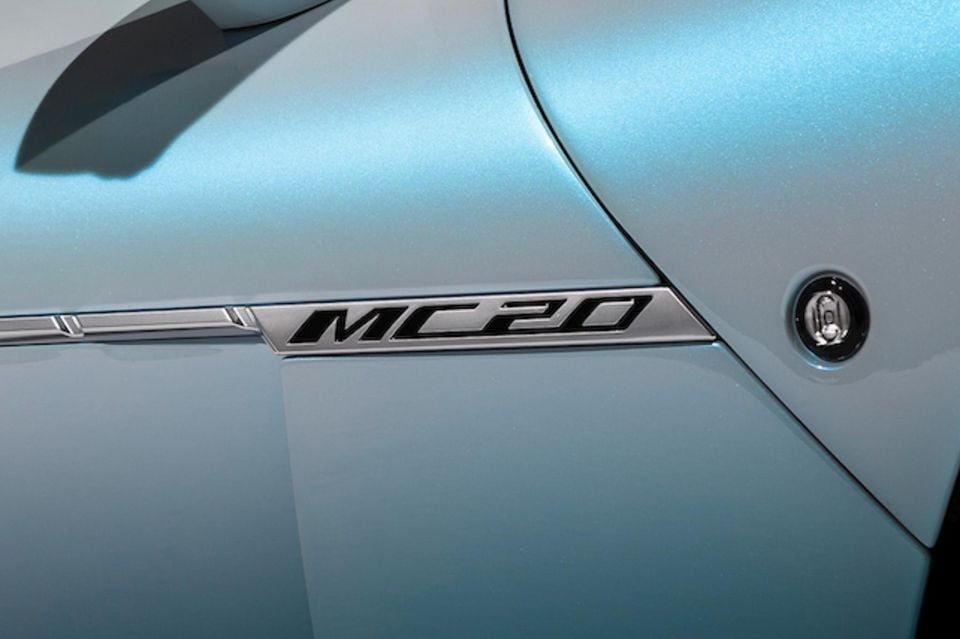
MC20 buyers can also choose from a vast array of optional extras across exterior, wheels, brakes and calipers, upholstery and technology.
Depending on your resources you may need to choose wisely, given the prices for some of the more desirable options for the MC20 Cielo. How much? If you’re not on the Forbes rich list you could only describe the prices as eye-watering.
Here’s a sample:
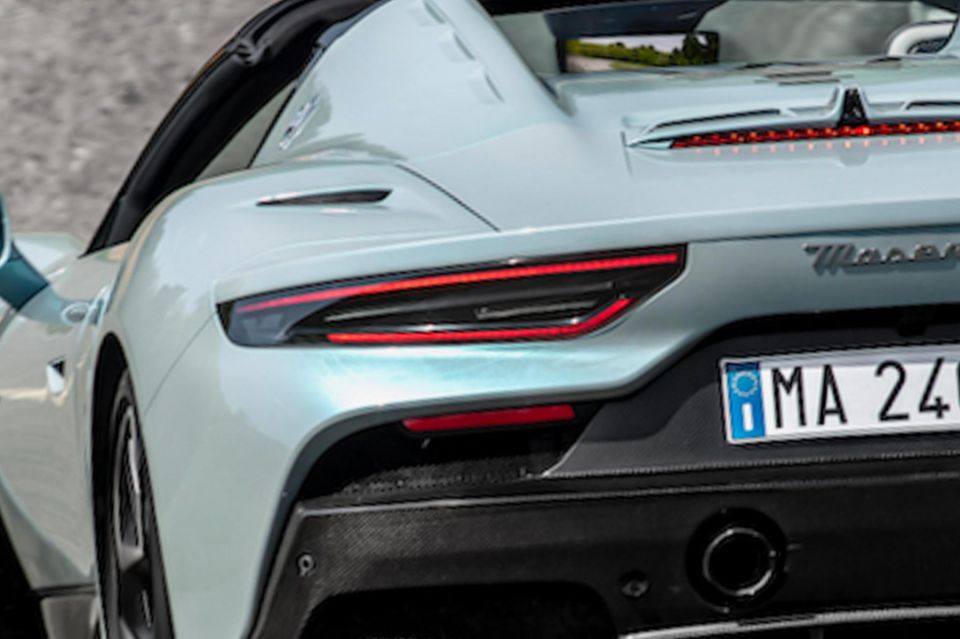
2024 Maserati MC20 pricing:
Rivals include:
All prices are before on-road costs
Buy your new car without the stress. It's fast, simple and completely free.

Great service from Travis and team, second time I have used this business would not hesitate to recommend them to anyone
Craig C.
Purchased a Ford Ranger in Sunshine Coast, QLD
CarExpert helped Craig save thousands on his Ford Ranger, now let us save you on your next new car.
Find a dealNot quite what you might expect in a Maserati supercar costing more than half-a-million dollars and then some.
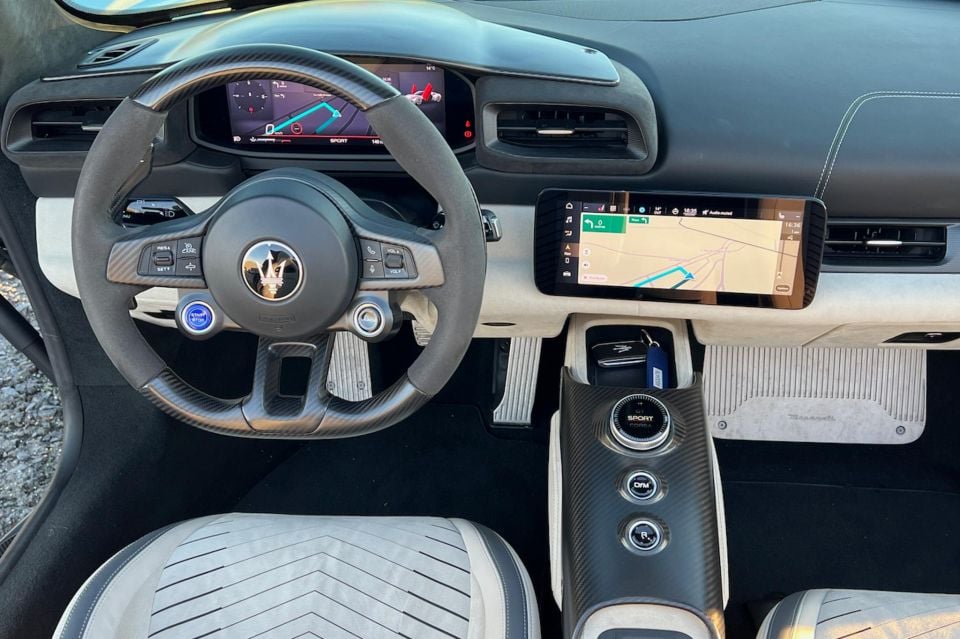
The butterfly doors do offer proper supercar theatrics as well as providing pain-free access to the cockpit and exposing the carbon-fibre tub. The sill is relatively narrow and not something you ever need to worry about getting in or out.
Sure, there’s lashings of Alcantara, leather and carbon-fibre from floor to ceiling, and the pedal set is genuine metal but it’s just not all that luxurious compared to a top-shelf Maserati Grecale Trofeo.
Perhaps it’s the Laser Effect Alcantara in white which doesn’t quite pop like the magnificent tan leather interior in the Ferrari 296 GTB I’d driven earlier in the year. Nevertheless, the fabric itself is superbly comfortable, as are the hugely supportive bucket seats by Sabelt, an Italian racing product company.
There’s a far more serious ambience at play in the MC20 Cielo. The focus is clearly on maximising the open-air enhancement of the ferocious aural drama produced by this mid-engined Maserati.
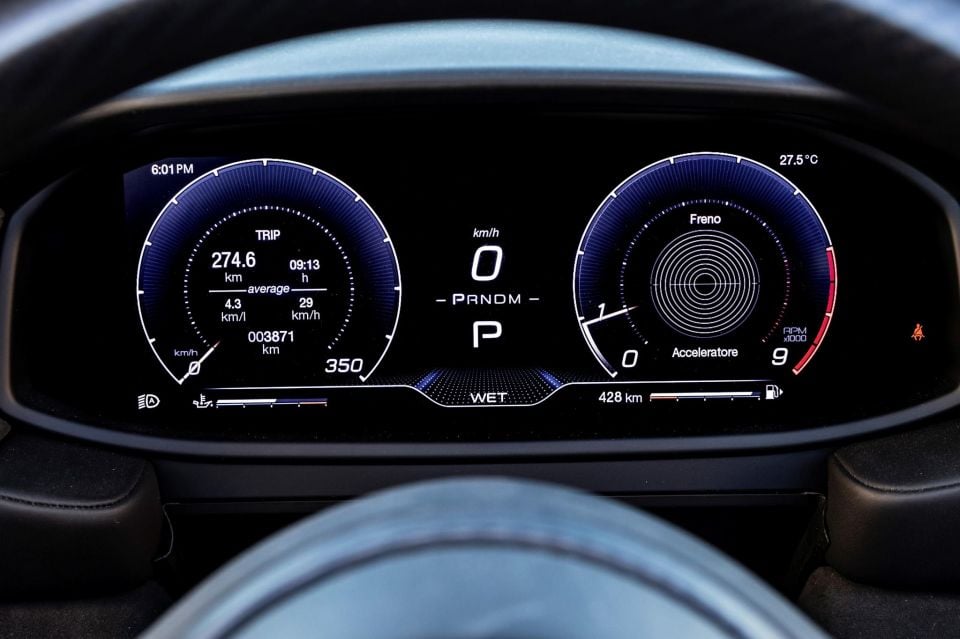
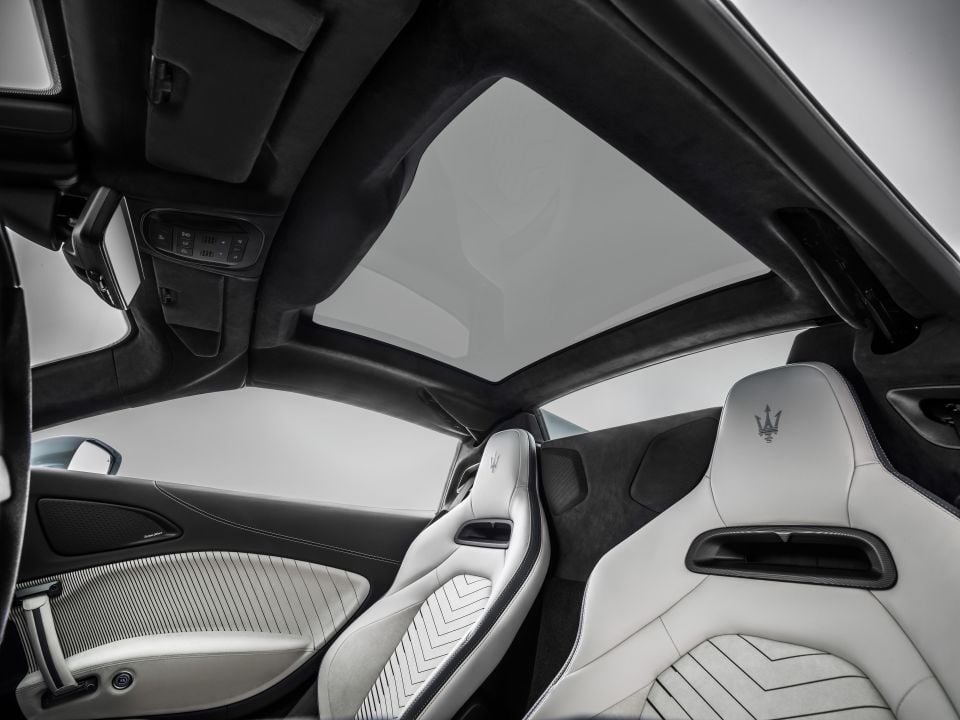
Rather than outright opulence or luxury, it has more the look and feel of precision and unbridled engineering focus. But honestly, the overall effect comes down to the choice of colour and materials in the cockpit.
That same Laser Effect Alcantara also lines the door cards, and all the touchpoints are soft. There are no cheap surfaces in the MC20 Cielo.
Technology is largely sorted too, with two decent-size screens taking care of most of the car’s general functions. The exceptions are the start/stop and launch-control buttons, both of which are found on the steering wheel, along with carbon-fibre paddleshifters attached to the steering column.
The steering wheel itself was designed and developed in consultation with Andrea Bertolini – Maserati reference driver and former World Champion in the spectacular MC12 sports car. It’s beautifully constructed in carbon-fibre and partly wrapped in Alcantara. More importantly, it feels good to the touch.
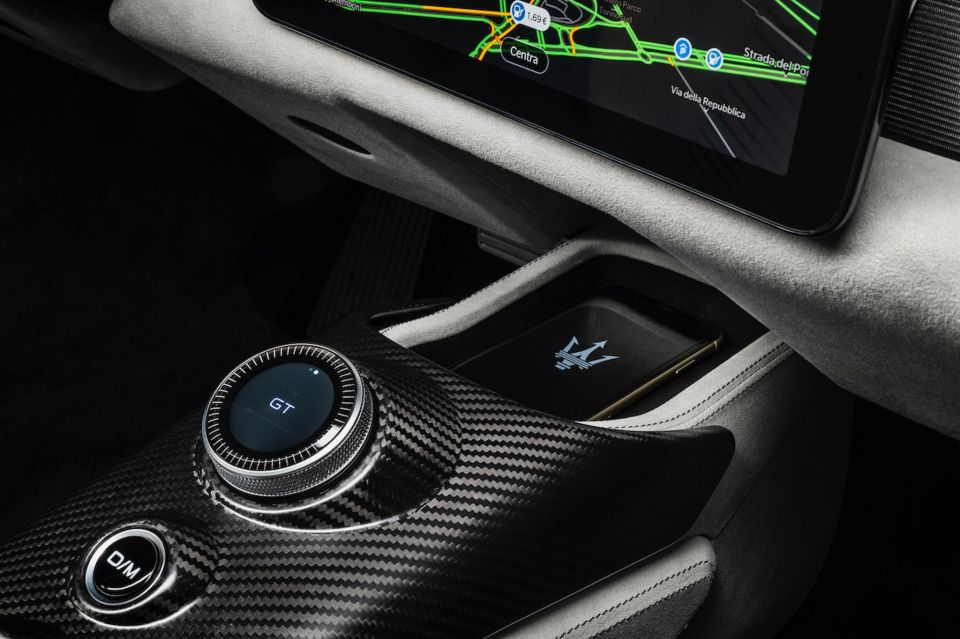
The central console tunnel incorporates just three functions; a dual Drive/Manual button, Reverse and a rotary drive-mode selector. Further forward there’s a small phone charging tray, and that’s about it.
Storage is otherwise tight and there are no door pockets, given the butterfly doors. At least there’s a small Alcantara upholstered glovebox where wallets and keys could go.
There’s still some useful luggage space behind the engine – but even that isn’t exactly generous – meaning compact soft bag and not much more.
It’s the full-blown Nettuno 3.0-litretwin-turbo 90-degree V6 with a dry sump, designed and hand-built completely in-house by Maserati at its Viale Ciro Menotti plant in Modena.
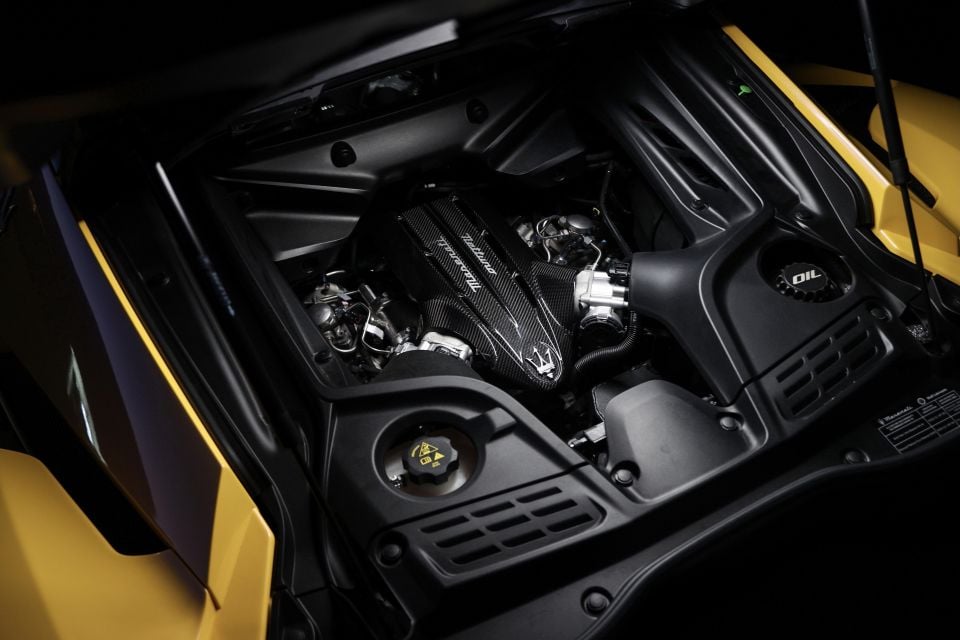
It’s paired with an eight-speed dual-clutch Tremec gearbox driving the rear wheels and making 470kW of power at 7500rpm and peak torque of 730Nm from 3000rpm to 5500rpm.
It’s good enough to propel the MC20 Cielo from standstill to 100km/h in ‘approximately three seconds’ but it feels quicker from behind the wheel under full throttle. Top speed is a claimed 320km/h, while zero to 200km/h happens in a claimed 9.2 seconds. Importantly, stopping distance from 100-0km/h is 33 metres.
Each Nettuno V6 motor takes more 24 hours to assemble across six individual stations, which doesn’t include fitting it to the car or final road testing. In fact, once the engine has been completed it’s also put through a 40-minute dynamometer session to make sure it all works perfectly.
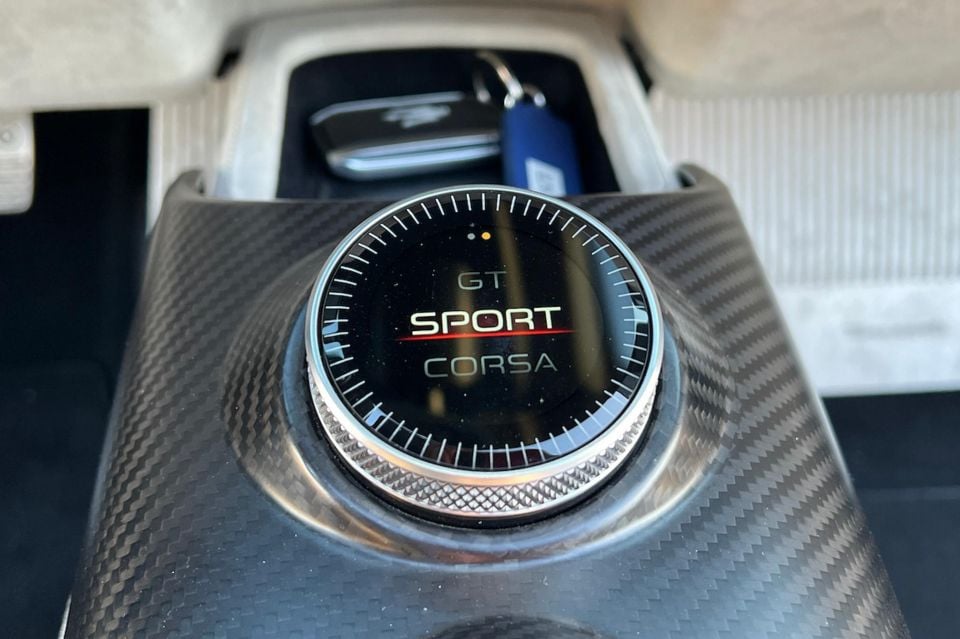
Taking a leaf from Formula 1 engineering, the MC20 Cielo uses twin spark plugs with a pre-chamber combustion system that sits above the main cylinder body. It ensures constant combustion and minimises fuel consumption under some conditions.
However, drive it with the sort of unbridled enthusiasm as is the prerequisite on semi-rural B-roads in Italy, and I guarantee you’ll be asking ‘Siri’ where the nearest petrol bowser is sooner than you might expect given its modest 60-litre fuel tank.
My time behind the wheel of Maserati’s fastest series production car might have been limited to a chilly afternoon, but there was no way on earth that roof wasn’t going to be wide open – albeit with beanie at the ready.
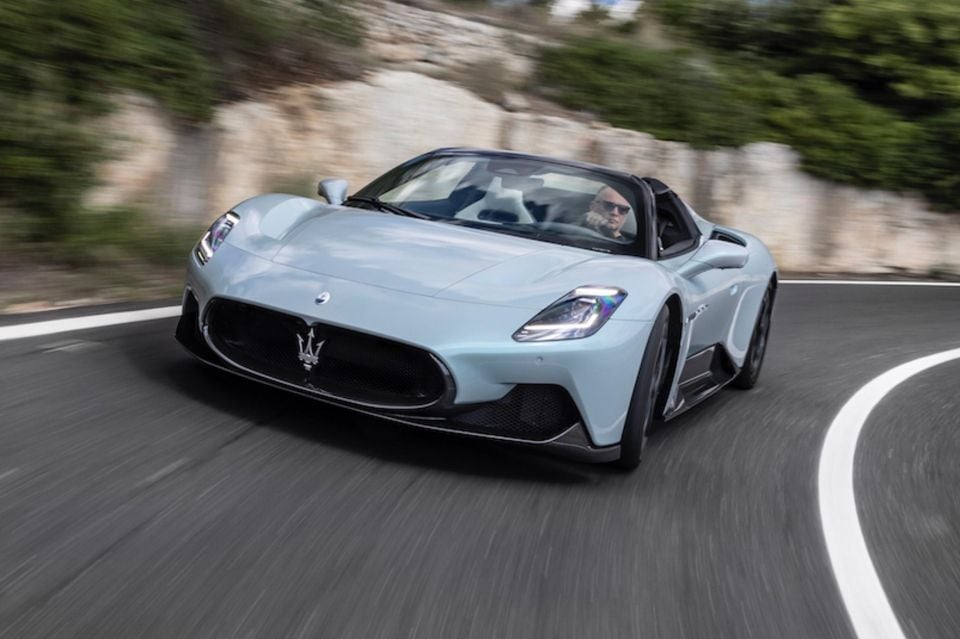
And when the sun finally sets and temperatures drop, that roof is closed in just 12 seconds.
It’s not just for the open-air experience though; it’s more for the no holds barred engine bark as you punch through the midrange and on up to 8000rpm. It’s simply intoxicating, especially when you factor in the simultaneous punch in the back delivered on those full-tilt upshifts.
It’s what gives you that proper 360-degree immersive thrill like only a hardcore super sportscar can deliver. Only with the MC20 Cielo, it’s actually a piece of cake to drive. It’s just so rewarding when you string a few bends together and quietly celebrate the grip levels on offer – and the sheer speed you just carried through those corners.
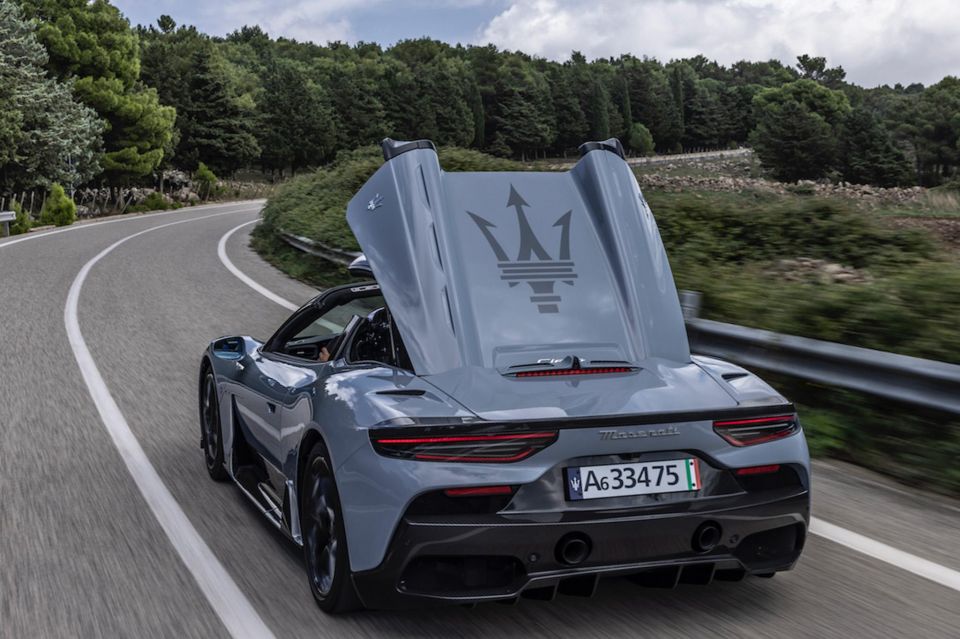
What about the noise you ask?
It’s got plenty when you’re high-up in the revs, but even at low speeds in the most aggressive Corsa mode it sounds tough. It has a proper GT-racer-style bark – not as thrilling as the 296 GTB, but it’s more visceral than the McLaren 720S.
GT is the default drive mode, likely for the daily commute (should you be so lucky), with engine boost and pedal response at normal sensitivity. In this mode the Cielo’s active exhaust valves are also only open over 5000rpm. Frankly that won’t do today so I’ve dialled up the full-bore Corsa mode.
Even in Sport, the Nettuno engine doesn’t really start to sing with any kind of genuine howl until you’ve wound it up past 3500rpm. This that means you might miss out on the surround-sound effect as you meander up an ancient-old Roman road with rock walls on either side of the narrow street with everyone looking on, followed by a genuine nod of appreciation.
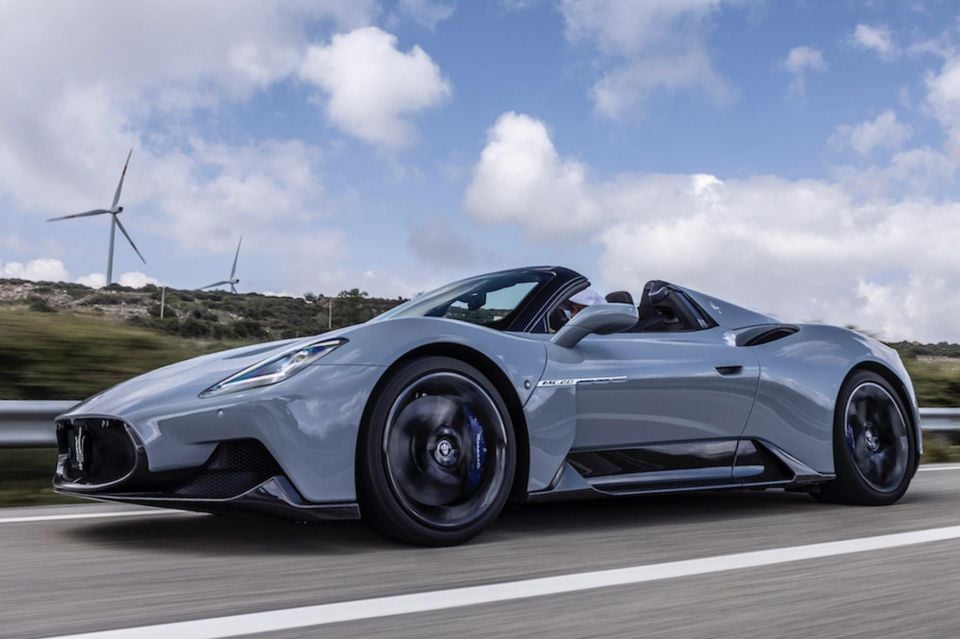
Where expert car reviews meet expert car buying – CarExpert gives you trusted advice, personalised service and real savings on your next new car.
In Corsa those active exhaust valves are always open and maximum power is on tap 100 per cent of the time. Throttle sensitivity is also at hair-trigger levels and you can launch it simply by pressing a button on the steering wheel.
Kicking off from the Vallelunga Circuit on the outskirts of Rome around school pick-up hour, it was inevitable I would strike my fair share of traffic. However with plenty of safe overtaking breaks, the MC20 was able to set a decent pace in my quest to get to some less travelled roads before winter darkness descended and temperatures plunged.
In the MC20 Cielo you just don’t pass one of two cars in each overtaking manoeuvre, as you would in more affordable performance models. Instead, you just jet past cars, tractors and trucks, in one obscenely fast move before lifting off and doing it all over again.
I don’t recall the Ferrari 296 GTB packing the kind of mid-range fury of the Maserati, despite its hybrid boost and world-class chassis, gearbox and engineering standards. It’s unmatched as a mid-engine all-rounder in my view.

Perhaps the 720S Spyder feels more of a match on sheer acceleration when you do get the opportunity to pin it for a few seconds. But even then, I’d still the put the Cielo ahead for its ferocious build-up of pace from the mid-range. If we can just forget the claims for a second and focus on what it actually feels like from behind the wheel, the Maserati just feels quicker.
It’s nimble too. Perhaps not quite in the same league as the Ferrari, but it’s not far off; and there’s plenty of communication via the steering wheel. You feel the nitty gritty of the tyres and the available grip when you really start to push.
And that’s on winter tyres, which are hardly ideal for a serious nudge but the MC20’s chassis is deft enough to still be decimating strings of fast-flowing corners across some glorious undulating terrain. Even shod with these less-than-ideal Michelins it’s still hugely capable and fun to pilot. I can only imagine it on grippy Pilot Sport 5S summer tyres and how much more pace it could carry – scary, really.
I like the gearbox as well. Left to its own devices, even in Sport, it’ll drop down a few gears as you brake hard into a tight second-gear turn. Then (if you’re like me) you’ll start pulling your own shifts – given the sheer availability of the extra-long carbon-fibre paddles.
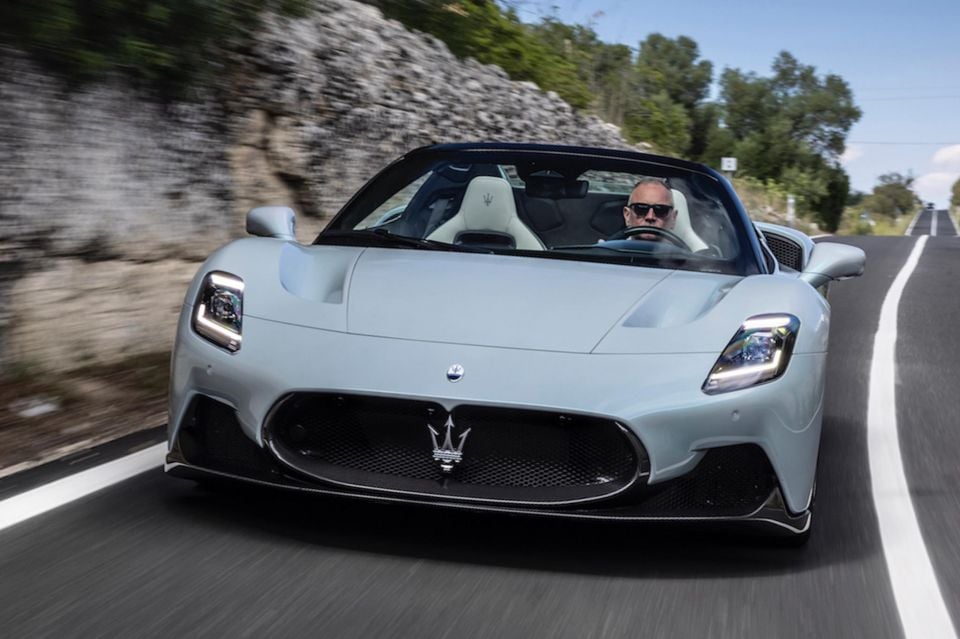
What struck me most about the Maserati was its innate ability to completely anaesthetise coarse road surfaces, especially at pace. When travelling through villages though I started out dialling the dampers back to a softer setting, but really, even in Sport it’s capable of crushing most bumps and rough edges.
Better still, MC20 Cielo is an incredibly easy car to pilot. It’s not intimidating – not one bit – until of course you get to mash the throttle to the firewall and experience warp speed in this newest Italian exotic.
Did I experience any negatives? There was a brief moment of panic coming up fast on one particular hairpin and there wasn’t much bite from the brakes, at least at the top of the pedal travel. At the time, I put it down to the carbon-ceramic discs not quite having enough heat in them, as well as the not-so-grippy winter treads.
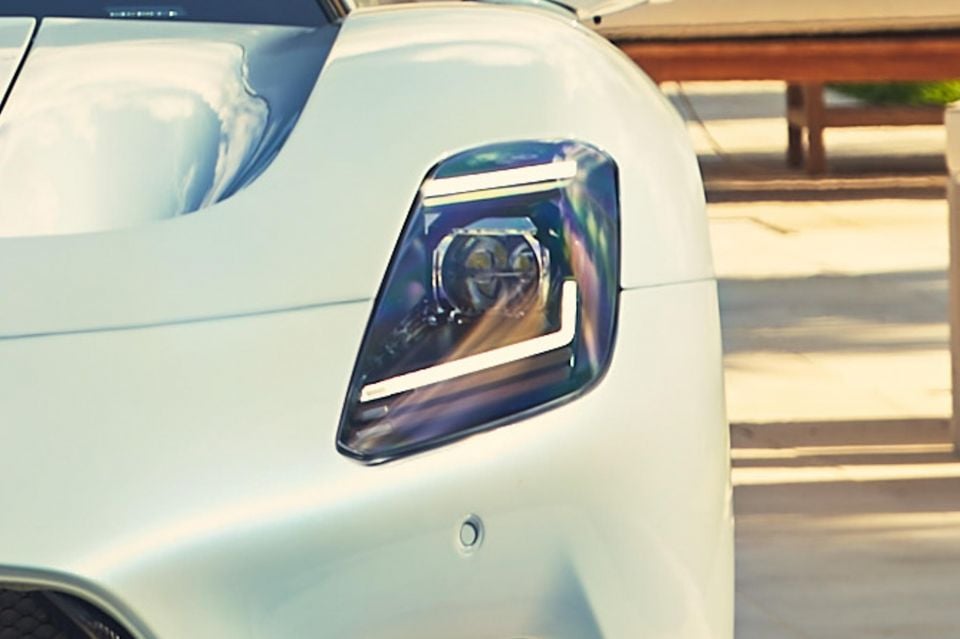


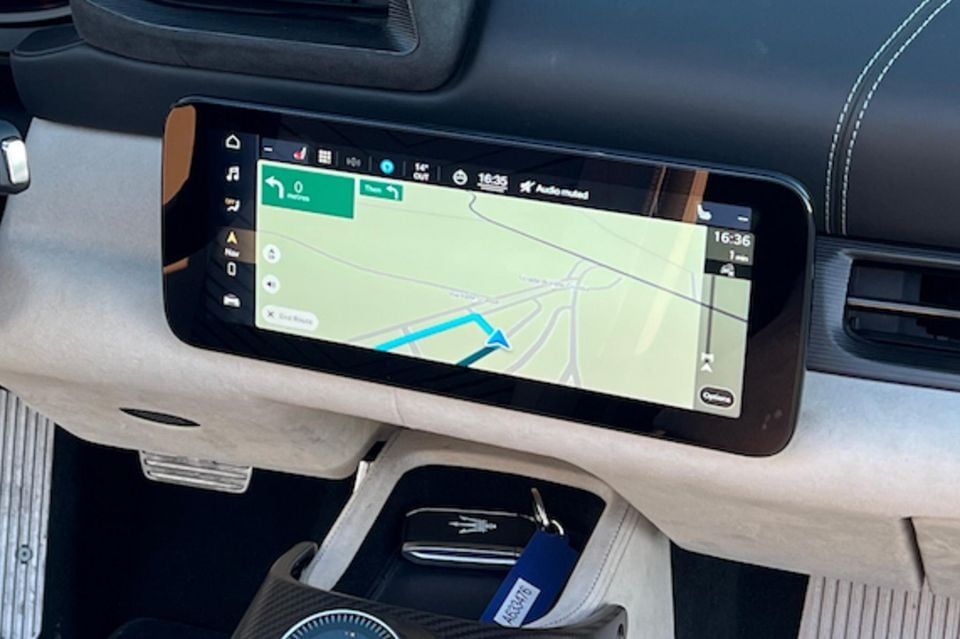
MC20 Cielo highlights:
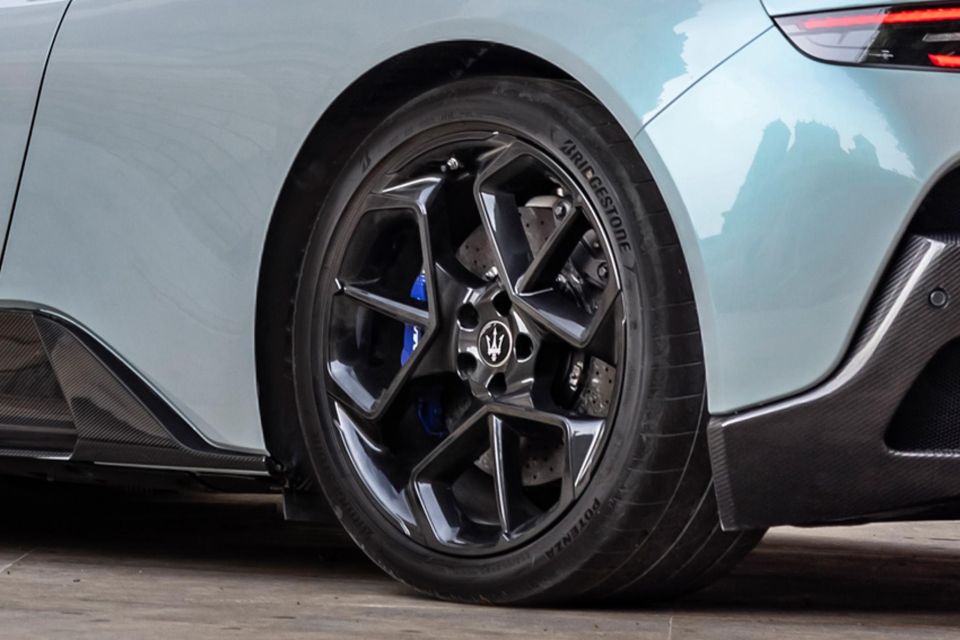
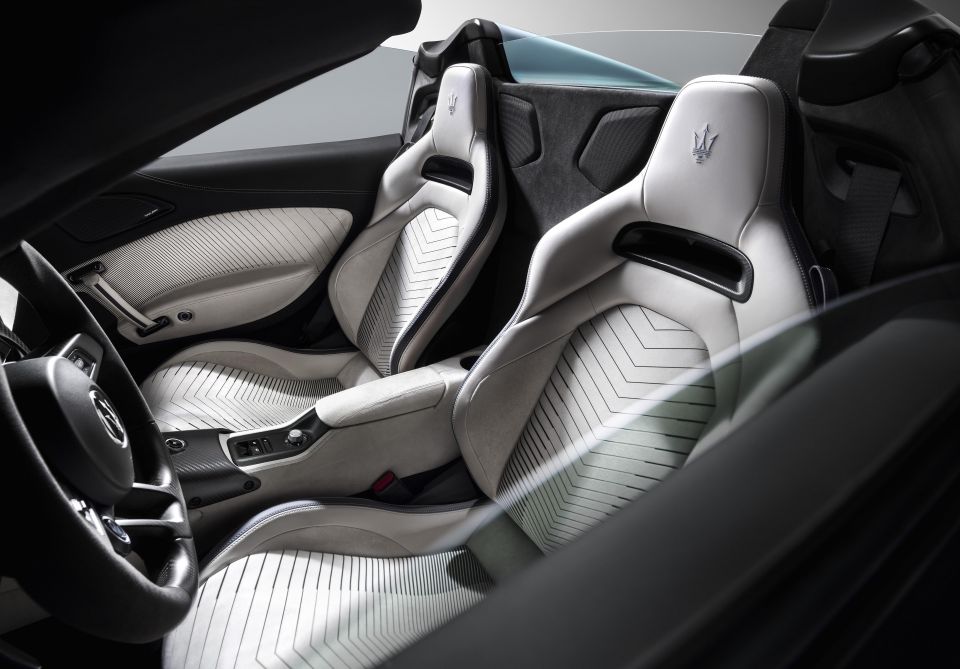
Available colours include:
There’s also a huge array of more specialised exterior colours for the MC20 and MC20 Cielo including the original launch colour; Aquamarina, as part of the Maserati Fuoriserie customisation program.
Additionally, there are dozens of optional Fuoriserie paints available including Solid, Special Solid, Metallic, Metallic Special, Tricoat Special, Matte Special, and Matte selections.
Neither the Maserati MC20 or the MC20 Cielo have been crash tested by ANCAP or Euro NCAP. It’s worth noting it has a carbon-fibre chassis for strength and stiffness, as well as lightweight properties.
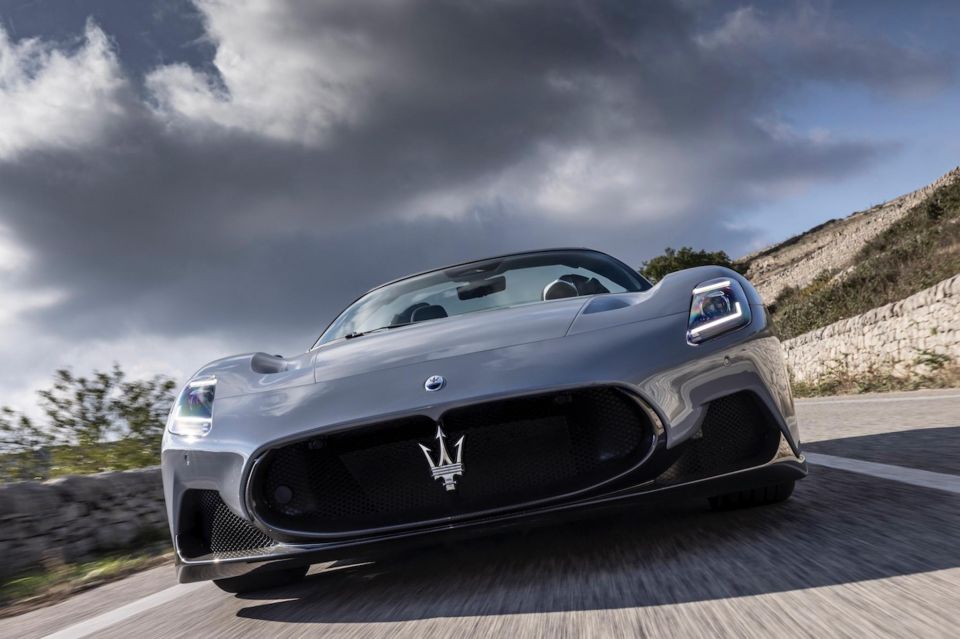
The Maserati MC20 and its MC20 Cielo counterpart has a larger advanced driver assistance system package available as an optional extra.
These include:
The Maserati MC20 Cielo is covered by a three-year, unlimited-kilometre warranty.
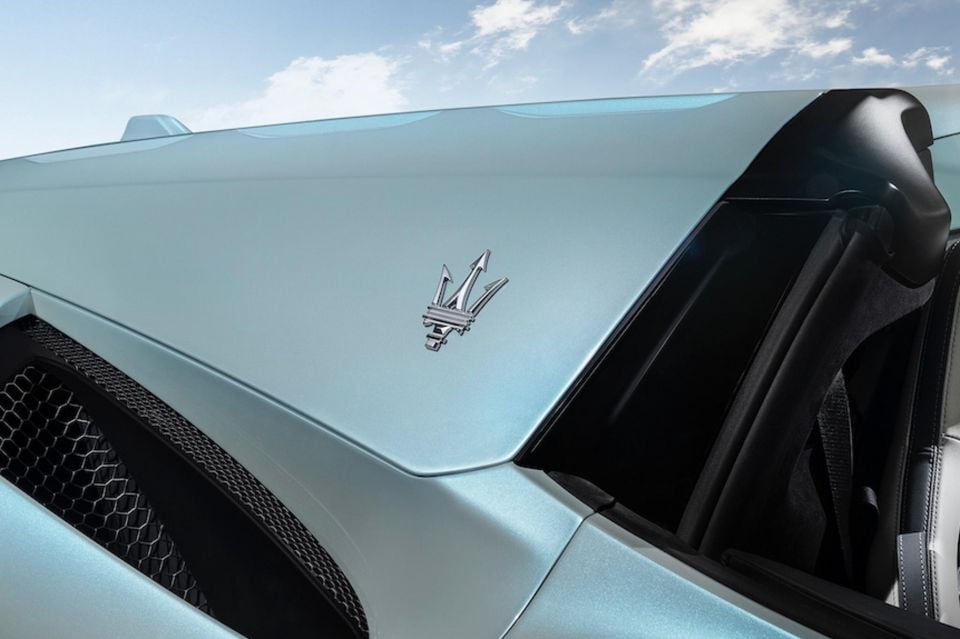
For 2023, both MC20 and MC20 Cielo models come with a “comprehensive maintenance programme” for three years. This covers all scheduled-servicing visits.
Maserati is a truly exotic marque steeped in glorious racing history and drop-dead gorgeous cars for the road and track. But it’s been almost two decades since it built a world-class super sports car.
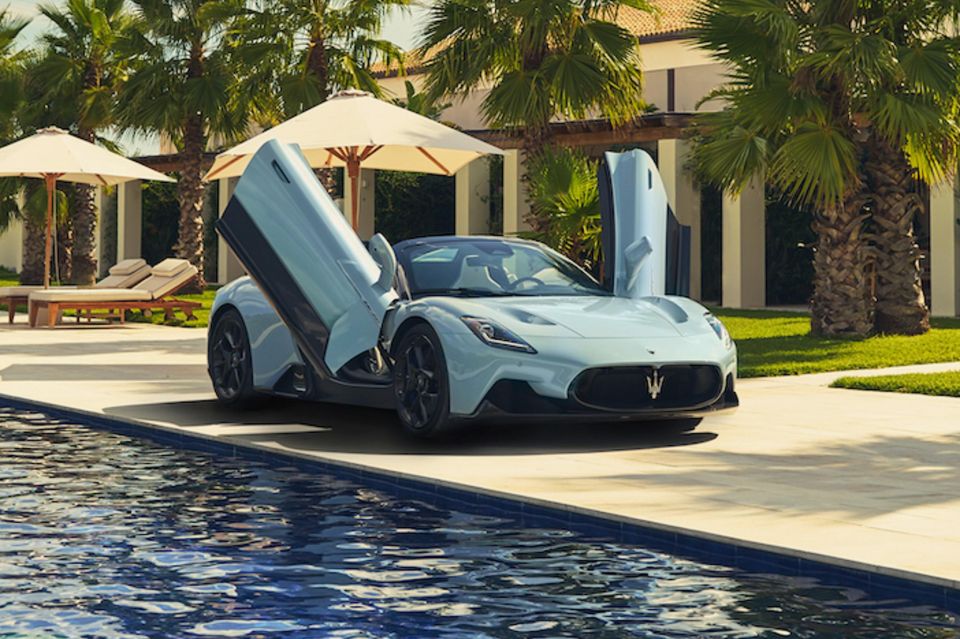
Now they’re back, producing crowd favourites like the MC20 and MC20 Cielo, which more than live up to all the hype that surrounded them at launch.
Not only is this an exceptionally beautiful mid-engine supercar, but it might also be the most liveable Spyder in its class, thanks to its dead-easy driveability and unrivalled warp-speed roof mechanism.
The Nettuno V6 is also something quite special. On the one hand it’s fun to just drop the roof and mosey along at 60km/h simply for the acoustic bliss of the exhaust note in Corsa. On the other, you can go ahead and scare yourself silly with its colossal mid-range thrust whenever you see a gap.
Or just stick one in your living room and look at it as you would any piece of art.

Click the images for the full gallery
BUY: Maserati MC20 MORE: Everything Maserati MC20
Where expert car reviews meet expert car buying – CarExpert gives you trusted advice, personalised service and real savings on your next new car.
Anthony Crawford is a CarExpert co-founder and senior presenter with 20+years in automotive journalism and content creation.


Max Davies
9 Minutes Ago


William Stopford
10 Minutes Ago


Derek Fung
40 Minutes Ago


Max Davies
8 Hours Ago


William Stopford
1 Day Ago


Ben Zachariah
1 Day Ago